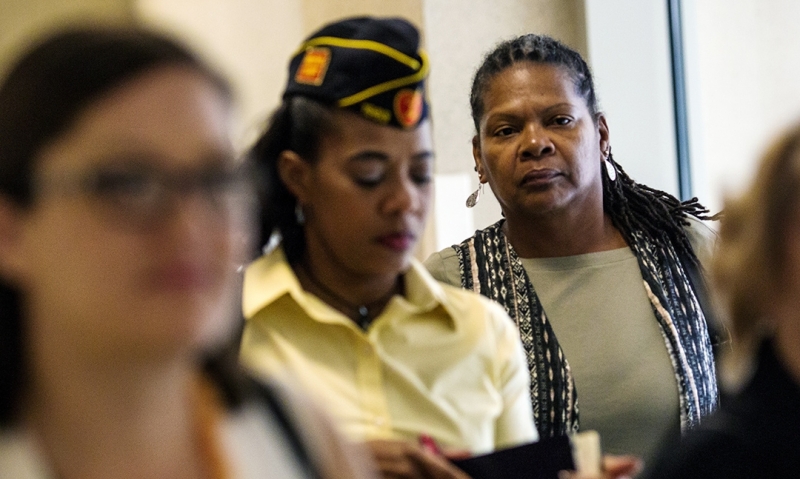
Two bills passed by the House Committee on Veterans' Affairs focus on gender-specific care and peer-to-peer counseling.
American Legion Resolution 147 addresses that women veterans are the fastest growing demographic to serve in the military and to enroll in the VA health-care system. Since 2000, the number of women veterans receiving VA health care has more than doubled and that number is expected to increase as more women veterans become eligible for Department of Veterans Affairs care. The resolution calls on VA to ensure the needs of “current and future women veteran populations are met” and that women veterans are not an afterthought of the VA system.
The House Committee on Veterans’ Affairs made strides last week in addressing some of the gaps when it comes to the health care of women veterans who seek care through the VA.
Sixteen bills passed favorably out of the committee and on to the full House of Representatives for a vote. The bills, including H.R. 5674, the Department of Veterans Affairs Maintaining Internal Systems and Strengthening Integrated Outside Networks Act of 2018 (VA MISSION Act of 2018), included the following two pieces of legislation that focus specifically on the care needs of women veterans:
H.R. 4334, the Improving Oversight of Women Veterans’ Care Act of 2017, will require the VA to submit an annual report to Congress on access to gender-specific services such as maternity care, mammograms, and gynecological care for women veterans. The legislation would also require VA medical facilities to submit a quarterly report on compliance with environment of care standards with a plan to strengthen these standards, according to a release.
H.R. 4635, will direct the VA secretary to increase the number of peer-to-peer counselors providing counseling for women veterans. The legislation would require the VA to ensure that the peer counseling program includes counselors with expertise in gender-specific issues. Indications that women veterans lack access to peer support programs was highlighted in recent legislation. The Center to Improve Veteran Involvement in Care in 2017 released a report on suicide prevention in women veterans. The report found that women veterans are at a disproportionately high risk for suicide and that the number of suicides among women veterans was 490 percent higher than non-veterans.
In the 26 years that have passed since the Veterans Health Care Act of 1992 first authorized the VA to provide gender-specific services for eligible women veterans, the status of women veterans has changed dramatically. A VA population model used by the Pew Research Center estimates women comprise nine percent of the veteran population which is tantamount to 1.9 million people. By 2045, the percentage of women veterans is expected to double, reaching 2.2 million women. During the same time frame, the population of male veterans is expected to drop by nearly half of what it is today.
Women veterans face a unique set of challenges when it comes to receiving care through the VA. According to the VA, women veterans are 30 percent less likely than their male peers to enroll for VA health care and much of this could be addressed by having staff and facilities that are equipped to better handle gender-specific needs.
- Legislative

